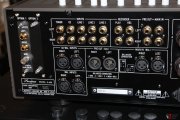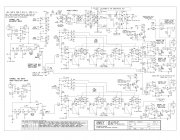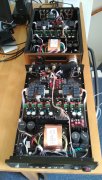Chris Cables
Chief Journeyman
Got an Etsy customer asking me to build some XLR cables for his nice-looking Esoteric N05-XD streamer/dac to his Accuphase E-650.
He asked me to swap pins 2 and 3 at the Accuphase ends (input) but I advised him to just go for a conventional pinout for the cables (pin1 = ground, pin2 = hot, pin3 = cold) so he can use the cables with other equipment later if desired. The Accuphase has a phase-inverter switch which swaps polarity for pin2/pin3.
(Why did Accuphase and other Japanese domestic market manufacturers do this?)
Anyway, now I'm not so sure about my advice to him after reading more into it here.
Is there any advantage to having an asymmetrical pinout arrangement for these cables, using the conventional XLR pinout at the output side and the Accuphase proprietary pinout at the input side?
I doubt there would be any audible difference would there?
Rear panel of his Accuphase E-650

He asked me to swap pins 2 and 3 at the Accuphase ends (input) but I advised him to just go for a conventional pinout for the cables (pin1 = ground, pin2 = hot, pin3 = cold) so he can use the cables with other equipment later if desired. The Accuphase has a phase-inverter switch which swaps polarity for pin2/pin3.
(Why did Accuphase and other Japanese domestic market manufacturers do this?)
Anyway, now I'm not so sure about my advice to him after reading more into it here.
Is there any advantage to having an asymmetrical pinout arrangement for these cables, using the conventional XLR pinout at the output side and the Accuphase proprietary pinout at the input side?
I doubt there would be any audible difference would there?
Rear panel of his Accuphase E-650





